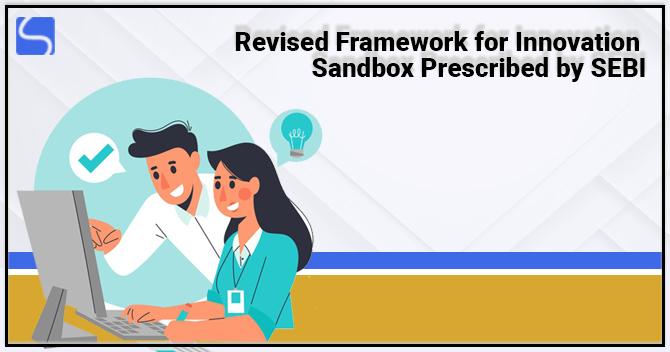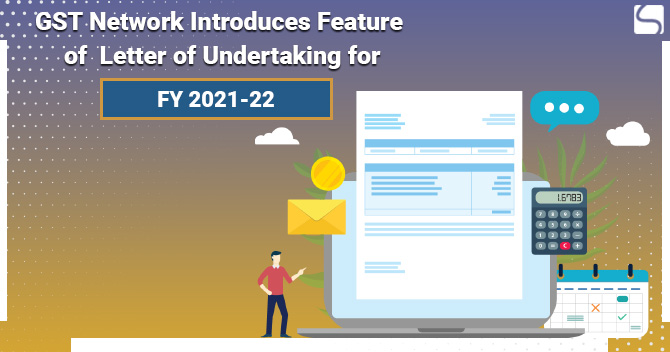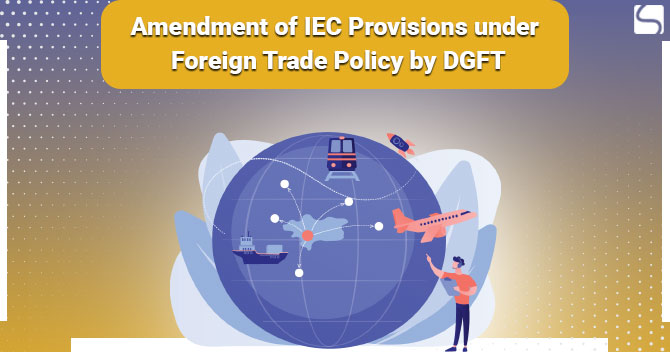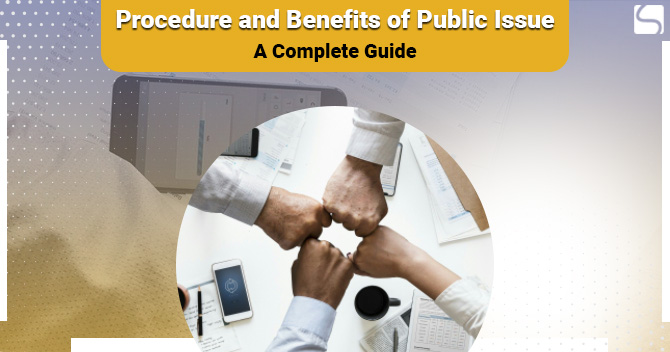Revised Framework for Innovation Sandbox Prescribed by SEBI

Shivani Jain | Updated: Mar 11, 2021 | Category: News, SEBI Advisory
To promote the development and growth of the securities market and the use of financial technology (FinTech) companies, SEBI has prescribed a revised framework for Innovation Sandbox. The same has been notified by way of SEBI Circular No SEBI/HO/ITD/ITD/CIR/P/2021/16, issued on 02.02.2021.
In this learning blog, we will talk about Innovation Sandbox and why SEBI has prescribed a revised framework for Innovation Sandbox?
Table of Contents
Concept of Innovation Sandbox
The term Innovation Sandbox means a mechanism that facilitates access to a situation (testing facilities and test data) offered by enabling organisations, such as Stock Exchanges, QRTAs (Qualified Registrar and Share Transfer Agents), and Depositories wherein innovators or sandbox applicants would be testing their innovations in remoteness and isolation from the live market.
Also, Read: SEBI Guidelines for Issue of Debentures in India
Need for Revising the Framework for Innovation Sandbox
The reasons for revising the framework for Innovation Sandbox are as follows:
- To create an ecosystem that promotes and boosts innovation in the securities and capital market;
- SEBI (Securities and Exchange Board of India) felt that start-ups comprising of FinTech firms must have access to the market concerning data, and test environments, which are otherwise not readily accessible to them;
- Also, to enable them to test their innovations effectively before the introduction of such innovations in a live environment;
Concept of Steering Committee under Revised Framework
To initiate the Innovation Sandbox, a steering committee including representatives from the enabling organisations has been formulated. Further, the key responsibilities of the said steering committee can be summarised as:
- The formed steering committee will supervise the operations and working of the Innovation sandbox;
- A representative from SEBI will be included as a member of this committee as well;
- The steering committee will process the applications furnished by sandbox applicants and can either approve or reject the same or can assign a lead enabling organizations etc.;
- The secretariat for a specific application will be the assigned lead enabling organization;
- The lead enabling organizations will be accountable for onboarding the applicant’s post approval of the application & monitoring the said applicant all over the lifecycle of the sandboxing;
Objectives of the Revised Framework for Innovation Sandbox
On the evaluation of the existing framework of Innovation Sandbox, and to encourage and boost innovation and to make the same even more suitable for participation in the Innovation Sandbox, the eligibility criteria and objectives of the Innovation Sandbox has been amended with graded entry norms.
Further, the new objectives of the revised framework for Innovation Sandbox are as follows:
- Create New Prospects and Opportunities in the Securities Market;
- To make the existing services more efficient, investor friendly, and inclusive;
However, it shall be noted that the same would be achieved only by giving access to both test environment and test data to Fintech firms, Financial Institutions, Start-ups, inclusive of entities that are not regulated by the SEBI, including individuals.
Different Stages of Innovation Sandbox
The different stages of the Innovation Sandbox are as follows:
Stage I
During Stage – I, only limited access will be provided to the test environment, and there will be a limit cap on the utilization of resources in terms of memory, processing power, storage etc.
Stage II
During Stage – II, the limit cap on the utilization of resources will be removed. However, the same will be subject to the availability of resources and power in that point of time.
Eligibility Criteria for Different Stages of Innovation Sandbox
The eligibility criteria for different stages of Innovation Sandbox are as follows:
Eligibility Criteria for Stage I
The eligibility criteria for stage I can be summarised as:
- The Applicant needs to be an Indian Citizen or the entities incorporated in India. Further, the KYC (Know Your Customers) norms should be in line with the CKYCR (Central Know Your Customers Registry) and KRA (KYC Registration Agency). Further, the KYC requirements comprise of the following:
- Name of the Fintech Firms/ Financial Institutions/ Start-ups/Individuals;
- Names of the Partners or Directors, if in case applicable;
- Address of the Registered Head Office/ Correspondence Address;
- Date and Year of the Registration or Establishment, if in case applicable;
- Contact Number and Registered Email Id;
- Official Website, if in case applicable;
- Government issued Identification Details, such as Passport, Driving License, Voter Id, PAN (Permanent Account Number), Aadhar Card, etc.;
- Letter of Undertaking (LOU) that the applicant is not debarred or blacklisted by any Government department, due to breach of some general or specific instructions, fraudulent or corrupt or any other illegal or unethical business practices;
- Any other information or detail as may be needed to process the application;
- The applicant must have a genuine necessity for testing the solution by using the resources available in the Innovation Sandbox. Further, the applicant must provide justification of necessity to access the test environment and test data. Also, it needs to inform what type of dataset is required;
Eligibility Criteria for Stage II
The eligibility criteria for stage II can be summarised as:
Purpose
The main objective of the project must be aligned with the purpose of the innovation sandbox.
Adequate Process
The applicant must demonstrate that they have achieved adequate progress and are on-track with their testing plan.
Post Testing Strategy
The applicant needs to present their post testing plan.
Benefits to Investors
The solution must offer identifiable benefits, whether direct or indirect, to the investors and to the capital market and the financial sector as a whole.
However, it shall be noted that an applicant is qualified for Stage-II only after completing a minimum period of 60 days in Stage-I of the Innovation Sandbox Testing.
Further, the applicants need to make a presentation to the steering committee for the evaluation and entry to Stage II. The same can either be physically or by any virtual mode.
Features and Structure of the Revised Framework for Innovation Sandbox
The components and structure of the Revised Framework for Innovation Sandbox can be broadly categorised into the categories as follows:
Design Components
The two types of Design Components are as follows:
Data Sets
- One of the most significant components or features of an Innovation Sandbox is the direct access to the securities market and the related data, which will allow applicants to test and improve the FinTech based solutions;
- The datasets which will be made available to the applicants need to be clearly defined and also must be in knowledge of the market participants. Further, the Indicative Datasets which will become part of the Innovation Sandbox can be summarised as:
- Depositories Data: KYC Data, Holding Data;
- Stock Exchange Data: Transactions Data, such as Trade Log, Order Log;
- RTA Data: Mutual Funds Transaction Data;
- The datasets used will be historical and anonymised data and will contain data concerning episodic market events as well. However, it shall be noted that Live Data will not be made available to applicants;
- Access to datasets will be facilitated in a phased manner, starting with the limited amount of data and on the basis of validations, more exhaustive data will be provided to applicants;
- The use of datasets will be governed and regulated by a comprehensive confidentiality agreement, which will include an “End User Agreement” clearly prescribing that the datasets made available will not be sublet or sold or misutilised or shared in any manner with any other entities. Also, the same will be used only for the mentioned purpose;
Infrastructure
- It shall be noted that all the datasets which will be used for testing solutions in the revised Innovation Sandbox will be shared, if possible, by way of the application program interface (APIs), and the same would be published and made accessible to all eligible applicants;
- The existing test platform will be made accessible by the enabling organisations to the qualified applicants to confirm that the said innovative solution is working and operating in the enabling organization’s environment;
- Enabling organizations will also need to provide Innovation Sandbox test kit (inclusive of Test data, API, Test Environment, Configurable Access Rights etc.) to the qualified applicants;
Intellectual Property Rights
It is foreseen that there will be numerous applications with parallel ideas in the innovation sandbox. Therefore, no claim with regard to the IPR (Intellectual Property Rights) will be applicable in the Innovation Sandbox.
Administrative Components
The two different types of Administrative Components are as follows:
Application Assessment
Applications received for participation in the Innovation Sandbox would be assessed and examined by the steering committee. Also, it would follow the prescribed graded eligibility criteria.
Interface for Innovation Sandbox
Enabling organizations will endeavour to make the whole innovation sandbox participation lifecycle, such as applying, tracking, on boarding, monitoring, reporting, etc. The completely digital lifecycle will ensure both transparency and efficiency.
Also, it shall be noted that the Innovation Sandbox web portal will be accessed at https://innovation-sandbox.in/
Conclusion
In a nutshell, the SEBI has issued this circular by exercising of powers provided under the provisions of section 11 (1) of the SEBI Act 1992 and Section 19 of the Depositories Act 1996. The same was done to defend the interests of investors in the securities and capital market and to promote the development and regulation of such a market.
Also, Read: Extension of Video Conferencing Facility to REITs and InvITs by SEBI














